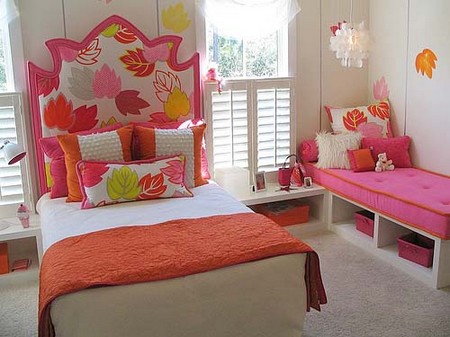Best Way to Create an Allergy-Free Conversion
As an alternative to moving house when more space is required, perhaps to create a home office or a room for a new baby, many people decide to convert their attic (loft) or basement. As when building a new home, this is the perfect time to install measures that are both low-allergen and energy-efficient.
Any conversion work creates huge amounts of dust, which can be a particular problem for those with respiratory allergies or eczema. And when old floorboards are taken up, there is always the risk of mould spores being distributed throughout the home. Allergic individuals who are particularly sensitive to dust or mould may have to consider moving out during the dustiest parts of the work.
You can help to minimize the dust problem by vacuuming numerous times during the day – bear in mind that sweeping just moves the dust into the air where it can cause even worse problems. In addition, you can try, as far as is practicable, to seal off the area being worked on to reduce the amount of dust and fumes penetrating into the rest of the home. As well as closing internal doors, tape up their edges, or hang plastic curtains at strategic points between the conversion work and the rest of the home.
Using a dehumidifier will help to dry out new plaster and concrete and remove some of the moisture that evaporates from these materials (for up to a year after application); and paying particular attention to ventilation will help to reduce the odours of new paint and building materials.
Insulation
- Install foil, polyester, or vermiculite chip insulation in preference to fibre types, such as mineral wool or powdery cellulose insulation. Even low concentrations of insulation particles in the air can irritate the airways and cause coughing and wheezing in some allergic individuals.
Damp
- Check the roof regularly for leaks to stop damp penetration. Blocked gutters will overflow, causing water to saturate the ground around the building and potentially allowing damp into basement foundations.
Timber treatment
- Handle timber treatments carefully to avoid skin contact or breathing in the fumes. Otherwise, they may irritate the skin and mucous membranes, and cause headaches, dizziness, and nausea. Many of the wide range of approved formulations to protect wood from insect or fungal attack contain potentially toxic chemicals and are also often dissolved in VOCs.
- Consider moving out of the home until all odour has disappeared should wood treatment ever become necessary if you have severe asthma or rhinitis. Choose water-based preservatives if possible, as these contain lower levels of VOCs.
- Uplighters are useful where you have a sloping ceiling that makes installing recessed ceiling lighting difficult. Uplighters produce a low-glare lighting effect, but they do require more frequent dusting than recessed fittings.
- Consider using recessed light fittings that have no perforations and a tight seal between the light and ceiling. This eliminates air leakage around the fitting, preventing condensation and energy loss.
Duct and vents
- Clean ventilation or air-conditioning ducts out thoroughly to remove any dust or debris that may have entered during the conversion work, or when you are building a new home. Otherwise, fine particles from the debris, which can represent a respiratory irritant, may circulate within the ducts and enter the indoor air through room vents.
Windows
- Install double- (secondary-) glazed, high-efficiency windows to reduce condensation and improve energy efficiency.
- Consider windows made with retractable blinds (shades) internal to the window.
- Position the windows strategically to maximize the use of natural light.
Soft furnishings
- Choose leather and vinyl furniture in preference to fabric-upholstered types. Any fabric-upholstered furniture should have removable covers washable at temperatures high enough to kill mites.
- Ensure cushions (pillows) have washable covers or consider putting on an inner anti-mite barrier covet: After washing dry cushions thoroughly to prevent the growth of mould.
Heating
- Consider radiant heating in the form of panels on the walls or within the skirting (base) board. Under floor heating provides warmth underfoot for hard surface flooring.
- Avoid forced-air central heating, which may blow dust around the room, as may fan and convector heaters, though this problem will be less important if any dust is kept to a minimum.
Flooring
- Install hard surface flooring (tiles, wood, or linoleum, for example), which does not harbour dust and other allergens.
- Choose short-pile, synthetic carpets in preference to deep-pile wool carpets if you don’t want a hard surface floor Some research indicates that the synthetic, short-pile types are easier to vacuum clean and the static charge may help retain allergens between vacuuming, preventing them from becoming airborne. Once installed, all carpet must be vacuumed regularly to minimize dust mites and allergens.
- Keep the room well-ventilated until the smell of a newly installed carpet wears off. Foam-backed carpet should be avoided-because of formaldehyde emission.
- Seal wooden floors, as these are easier to clean than unsealed types with gaps, through which dust may blow up from below.
Categories
Advertisements
Recent Articles
 How to Understand Bed Sizes – A Small Guide
How to Understand Bed Sizes – A Small Guide How to Select Some Must Have Kitchen Accessories
How to Select Some Must Have Kitchen Accessories Best Way to Change a Car Tire
Best Way to Change a Car Tire Best Way to Write an Affirmation
Best Way to Write an Affirmation Best Way to Take Charge of Your Financial Life
Best Way to Take Charge of Your Financial Life Best Way to Survive a Party When You Don’t Know Anyone
Best Way to Survive a Party When You Don’t Know Anyone Best Way to Stop Self Sabotaging Yourself
Best Way to Stop Self Sabotaging Yourself Best Way to Start Journal Writing
Best Way to Start Journal Writing Best Way to Speak with a Powerful Voice
Best Way to Speak with a Powerful Voice Best Way to Simplify Your Life
Best Way to Simplify Your Life Best Way to Respond to a Put-Down
Best Way to Respond to a Put-Down Best Way to Reduce Acne Breakouts
Best Way to Reduce Acne Breakouts Best Way to Recover from Dining Disasters
Best Way to Recover from Dining Disasters Best Way to Quit Your Job Gracefully
Best Way to Quit Your Job Gracefully Best Way to Make Your Own Website
Best Way to Make Your Own Website




Leave a Reply